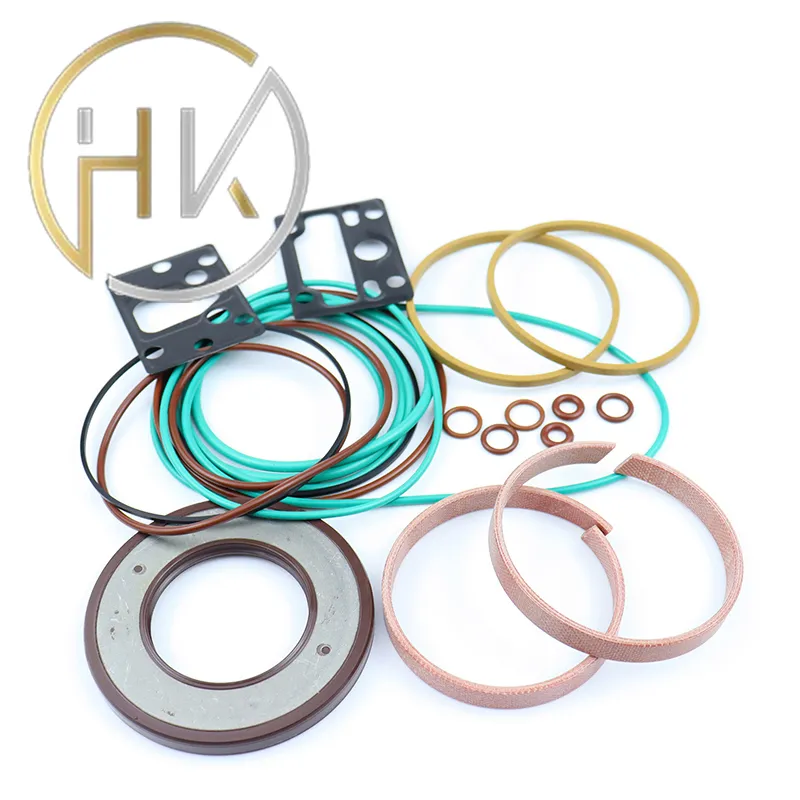Dec . 03, 2024 21:24 Back to list
Innovative Sealing Solutions for High Pressure Pump Efficiency and Reliability
High Pressure Pump Seals Ensuring Efficiency and Reliability
In the world of industrial applications, high-pressure pumps play a critical role in various processes, from chemical manufacturing to oil and gas extraction. Among the many components that ensure these pumps operate optimally, seals are perhaps the most vital. High pressure pump seals are engineered to withstand extreme conditions while maintaining functionality, longevity, and reliability. This article delves into the significance of high-pressure pump seals, their types, materials, and best practices for maintenance.
Understanding High-Pressure Pump Seals
Seals are designed to prevent the leakage of fluids between components, especially in high-pressure environments. In high-pressure pumps, even the slightest failure of a seal can lead to catastrophic failures, resulting in downtime, operational losses, and safety hazards. Thus, sealing solutions must be tailored to the specific demands of the application, including pressure, temperature, and the nature of the fluid being pumped.
Types of High-Pressure Pump Seals
1. Mechanical Seals These are commonly used in high-pressure pumps, featuring two flat surfaces that slide against one another to create a barrier. Mechanical seals are highly effective, as they can manage high levels of friction while maintaining a tight seal.
2. Compression Seals Often made from elastomers, compression seals use material deformation to create a seal under pressure. They are more straightforward in design but may need regular replacements compared to mechanical seals.
3. Lip Seals These seals contain a flexible lip that makes contact with a rotating shaft. Lip seals are suitable for lower pressure applications but can also be adjusted for specific high-pressure scenarios.
4. Packing Seals Utilizing a string of packing material, these seals can be tightened to create a seal around a shaft. While not as common in high-pressure applications as mechanical seals, they can still be found in certain industries.
Materials Used in High Pressure Pump Seals
The material selection for high pressure pump seals is critical for performance and durability
. Common materials includehigh pressure pump seal

- PTFE (Polytetrafluoroethylene) Known for excellent chemical resistance and low friction, PTFE is widely used in various sealing applications, making it perfect for aggressive fluids. - Elastomers Materials like nitrile (NBR), silicone, and fluorocarbon (FKM) are often used in seals due to their flexibility and resilience under pressure. - Ceramics In mechanical seals, ceramic materials can be used for their hardness and thermal stability, which helps in extending the lifespan of the seal.
Choosing the right material depends on factors such as operating temperatures, the chemical nature of fluids, and the specific pressures the seal will encounter.
Best Practices for Maintenance
To ensure the longevity and efficacy of high-pressure pump seals, regular maintenance is essential. Here are some best practices
1. Regular Inspections Conduct routine inspections to check for wear and tear, fluid leaks, and signs of overheating. Early detection can prevent major failures.
2. Proper Installation Ensure that seals are installed correctly per the manufacturer's specifications. Improper installation can lead to premature failure.
3. Monitor Operating Conditions Keep track of operating conditions such as pressure, temperature, and fluid compatibility. Any deviation from specified conditions can compromise the seal's integrity.
4. Replace Worn Seals Promptly Don’t delay replacing seals once you notice wear. Waiting can exacerbate the issue and lead to more significant problems down the line.
5. Training and Awareness Ensure that operators and maintenance personnel are trained to recognize the signs of seal failure and understand proper maintenance protocols.
Conclusion
High pressure pump seals are crucial for the efficient and safe operation of various industrial applications. By investing in quality seals, selecting appropriate materials, and implementing a robust maintenance strategy, organizations can enhance the reliability and lifespan of their high-pressure pumps. Through diligence and attention to detail, the risks associated with seal failure can be minimized, and operational efficiency can be maximized, ensuring a smoother and more productive industrial process.
-
TCN Oil Seal Metal Ring Reinforcement for Heavy Machinery
NewsJul.25,2025
-
Rotary Lip Seal Spring-Loaded Design for High-Speed Applications
NewsJul.25,2025
-
Hydraulic Cylinder Seals Polyurethane Material for High-Impact Jobs
NewsJul.25,2025
-
High Pressure Oil Seal Polyurethane Coating Wear Resistance
NewsJul.25,2025
-
Dust Proof Seal Double Lip Design for Construction Equipment
NewsJul.25,2025
-
Hub Seal Polyurethane Wear Resistance in Agricultural Vehicles
NewsJul.25,2025
-
The Trans-formative Journey of Wheel Hub Oil Seals
NewsJun.06,2025
Products categories
















